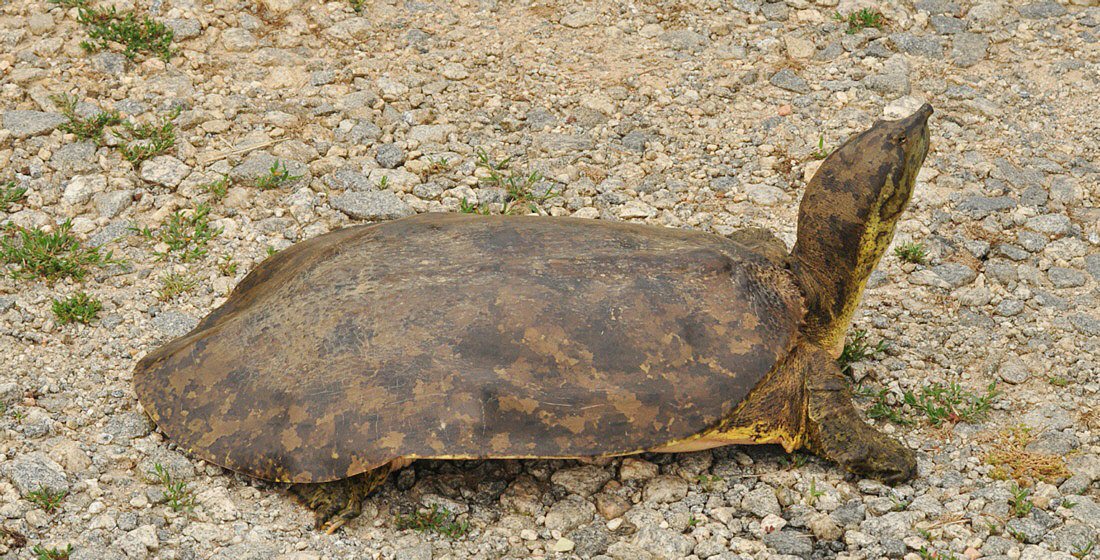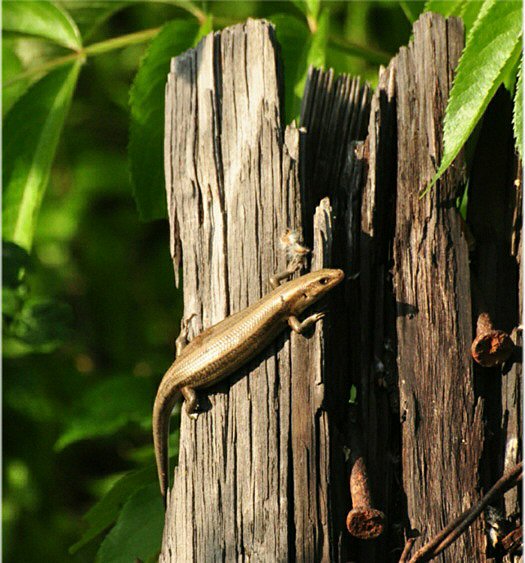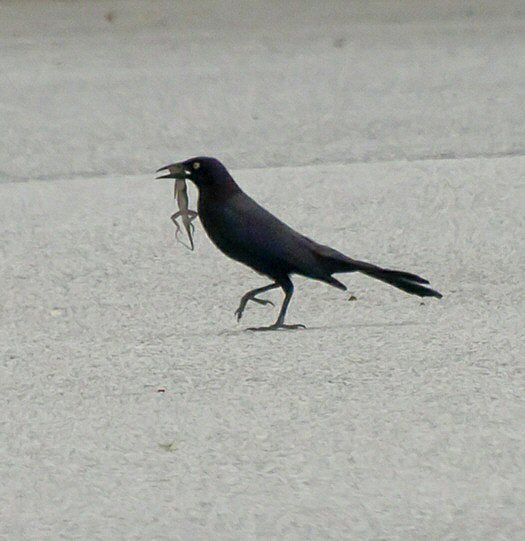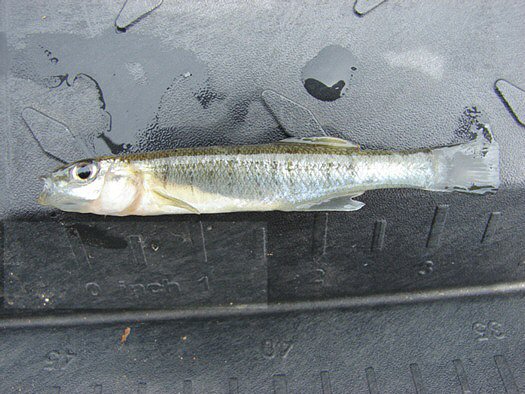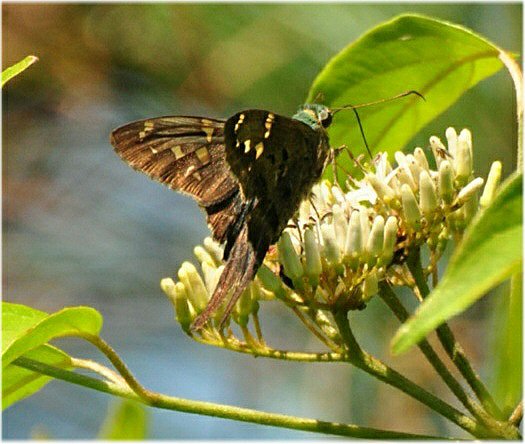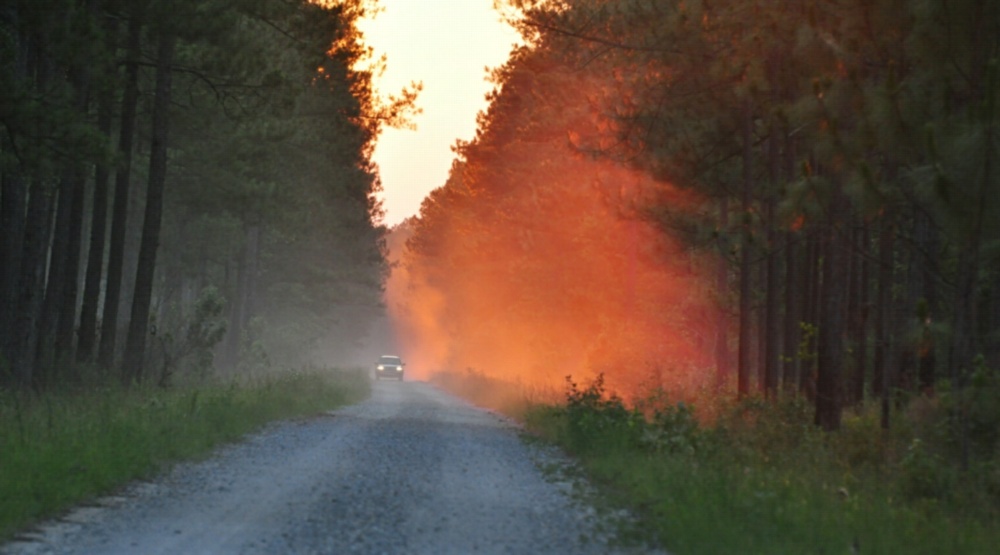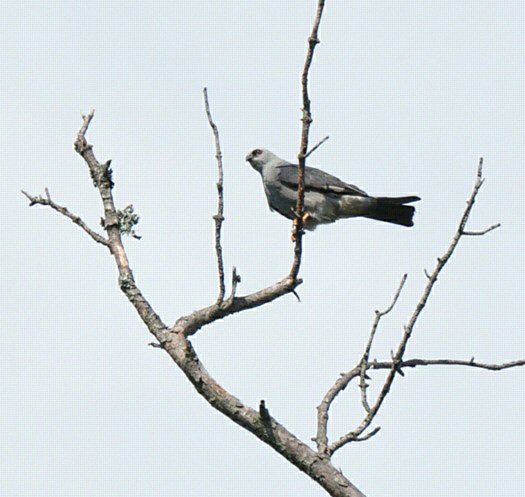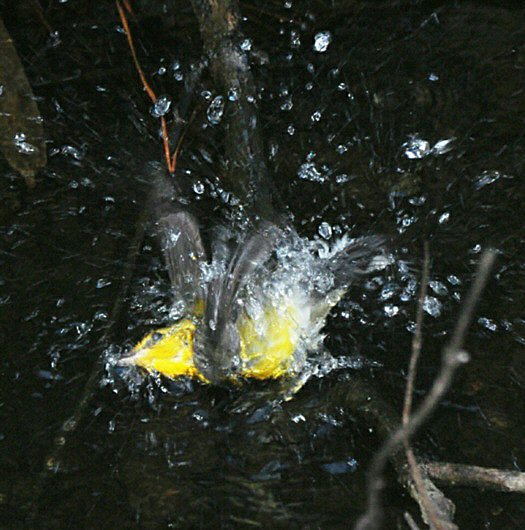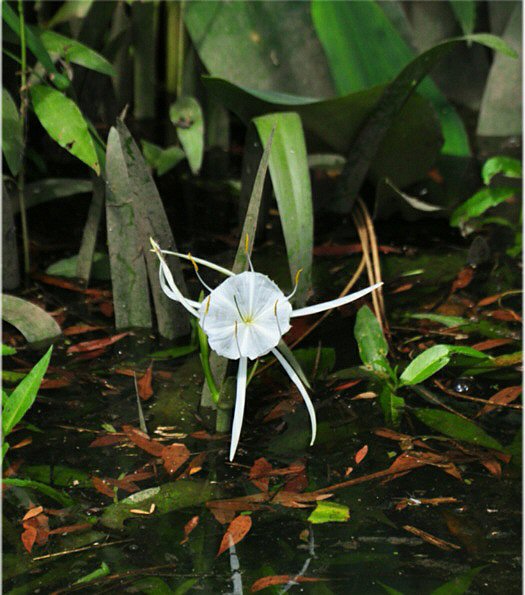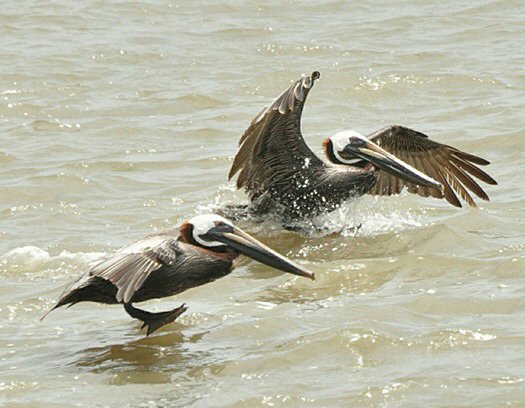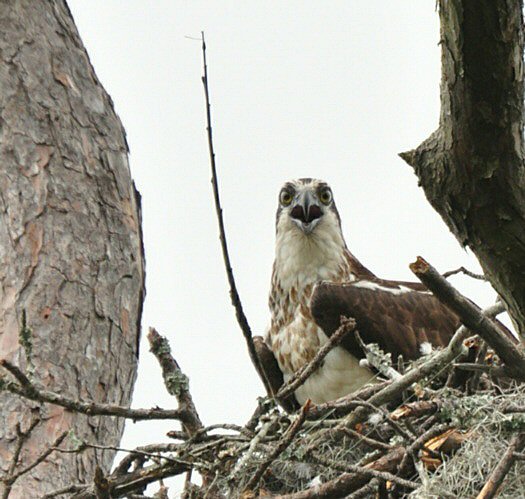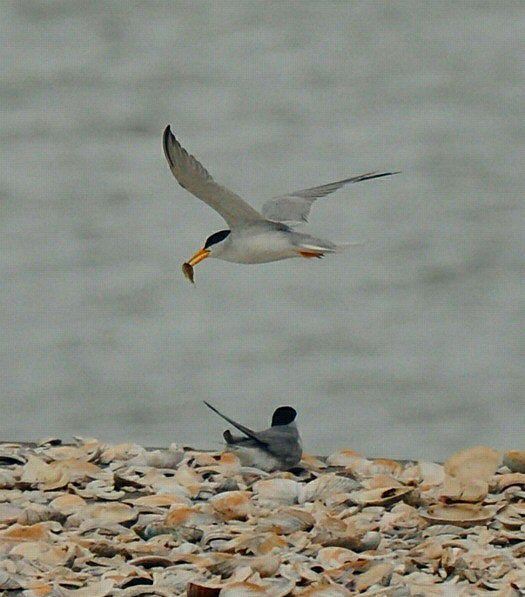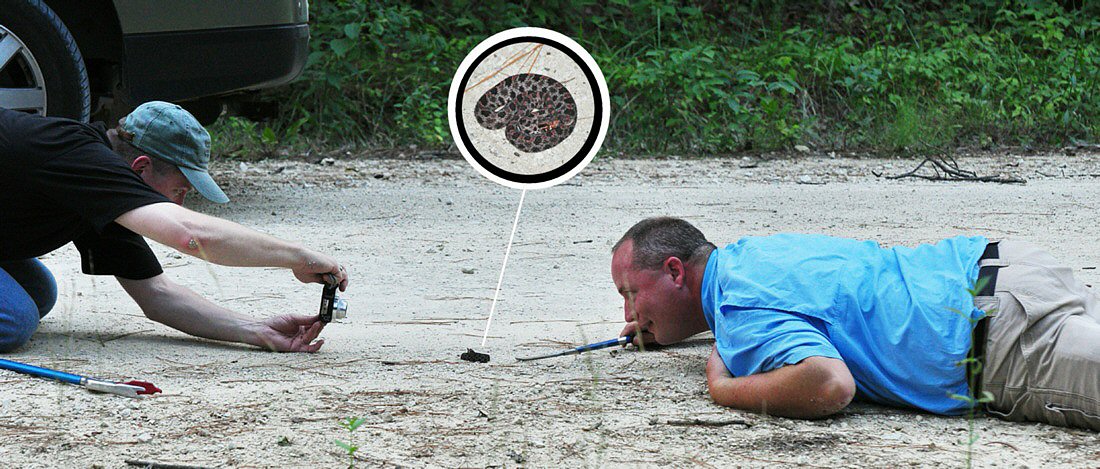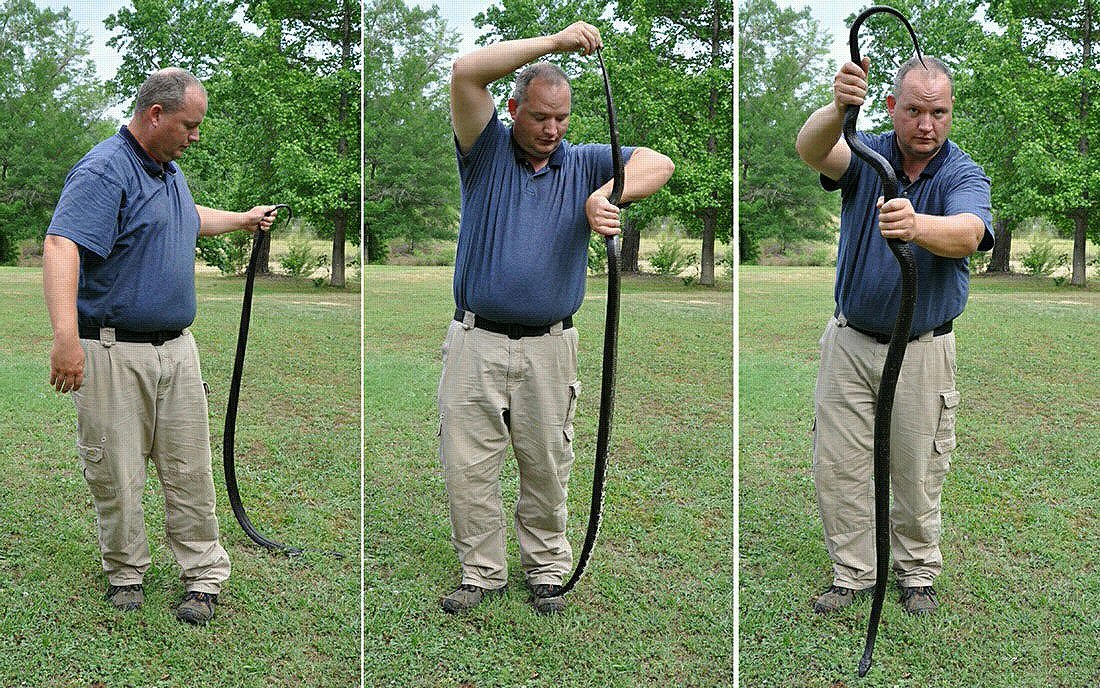|
May weather was noteworthy. Generally, the temperatures were warm. The first half of the month was dry, and
I was worried that not enough water was in the farm pond to allow adequate watering of my garden. Then, in
the wee hours of the 15th a storm dropped 5 inches of rain. I was joyed to see the pond filled to near full.
In the afternoon of the 17th an unexpected thunderstorm dumped 2 more inches of rain in less than an hour.
I rejoiced that the 6-foot diameter culvert under my driveway did not wash away. Unfortunately, the lightning
fried a half dozen of my electrical appliances, many associated with telephone service.
May is probably the best of all months for seeing wildlife in South Carolina. Foliage is verdant, flowers are
abundant and brilliant, and fauna abounds. Anytime a naturalist looks about, there are myriads of interesting
visions and sounds. Female turtles can be found searching for suitable sites to dig nests and deposit their eggs.
Late one afternoon on my way home, I spied a large female Gulf-coast Spiny Softshell Turtle on a bridge. She had made
an error which would have almost certainly ended her life. The concrete guards on the bridge were trapping her
into moving further along the bridge. I caught her and kept her overnight. Her shell measured 19 inches from
front to back. The next day I released her in the
farm pond. Softshells are not pond turtles, and I knew she would move on soon, but I wanted her to have time to
gain her bearings and not return to the road. Later that evening, my son, Win, and his son, Wolf, saw the turtle
on the pond bank digging a nest. They did not approach and risk disturbing her. The next morning they found the
nest robbed and all eggs eaten. Most assuredly, the culprit was a Raccoon.
I saw a couple of unusual sights during the month. I found an amelanistic Five-lined Skink on a fence post at the
farm. In a hospital parking lot, I observed a male Common Grackle parading about displaying to others of his kind
a Green Anole that he had captured.
On his job as a SC DNR fisheries technician, Win made a new state discovery. On two separate occasions, he found
dead or dying Banded Killifish in Lake Thurmond. Killifish are small and minnow-like. These particular fish were
well outside their known range in the state. They may have been used as bait.
For May over the last decade or so, Win and I have been joining a group of naturalists, principally herpetologists,
for a Memorial Day weekend outing in Francis Marion National Forest near Moncks Corner, SC. This is a protected
low country environment which allows us to observe many species different from those in the Piedmont where we live.
This year, my wife and older granddaughter, joined me on this wonderful outing. To entice them to come, I agreed
to limit the amount of time I spent in the forest and accompany them in sightseeing in the Charleston area.
Unlike our area of the Piedmont, the national forest was in a drought. Waterways normally full this time of year
were bone-dry. Many of the snake specimens we saw were obviously suffering from the effects of the drought. However,
the dusty unpaved roads did make for some spectacular sunsets. A Mississippi Kite had a favorite perching tree near
our campsite. Later, outside the national forest I saw several swooping over a large field capturing dragonflies.
Closer to the coast, I saw an Osprey on her nest, Brown Pelicans floating in the current at an inlet catching
fish being swept by the incoming tide, and Least Terns below the Ravenel Bridge.
On one of the national forest roads, we found a Carolina Pigmy Rattlesnake. This little snake was very cooporative
for our photography. This specimen was a small adult, but not of uncommon size. To get ground level views,
Win and another group member lay on the ground. Unusual photographic angles can be used to make snake specimens
appear larger or smaller. The closer the specimen is to the lens and the further a background reference is away from
the lens, the larger the snake appears. Fishermen often use this technique to make their catches more impressive.
There are many images of giant snakes circulated in the media which are just manipulations of normal size specimens.
During this month Win and I found Eastern Rat Snakes on the farm which were over 6 feet in length. I asked Win to
let me photograph him holding one of these specimens at arm's length before and behind him to illustrate this trick.
|
